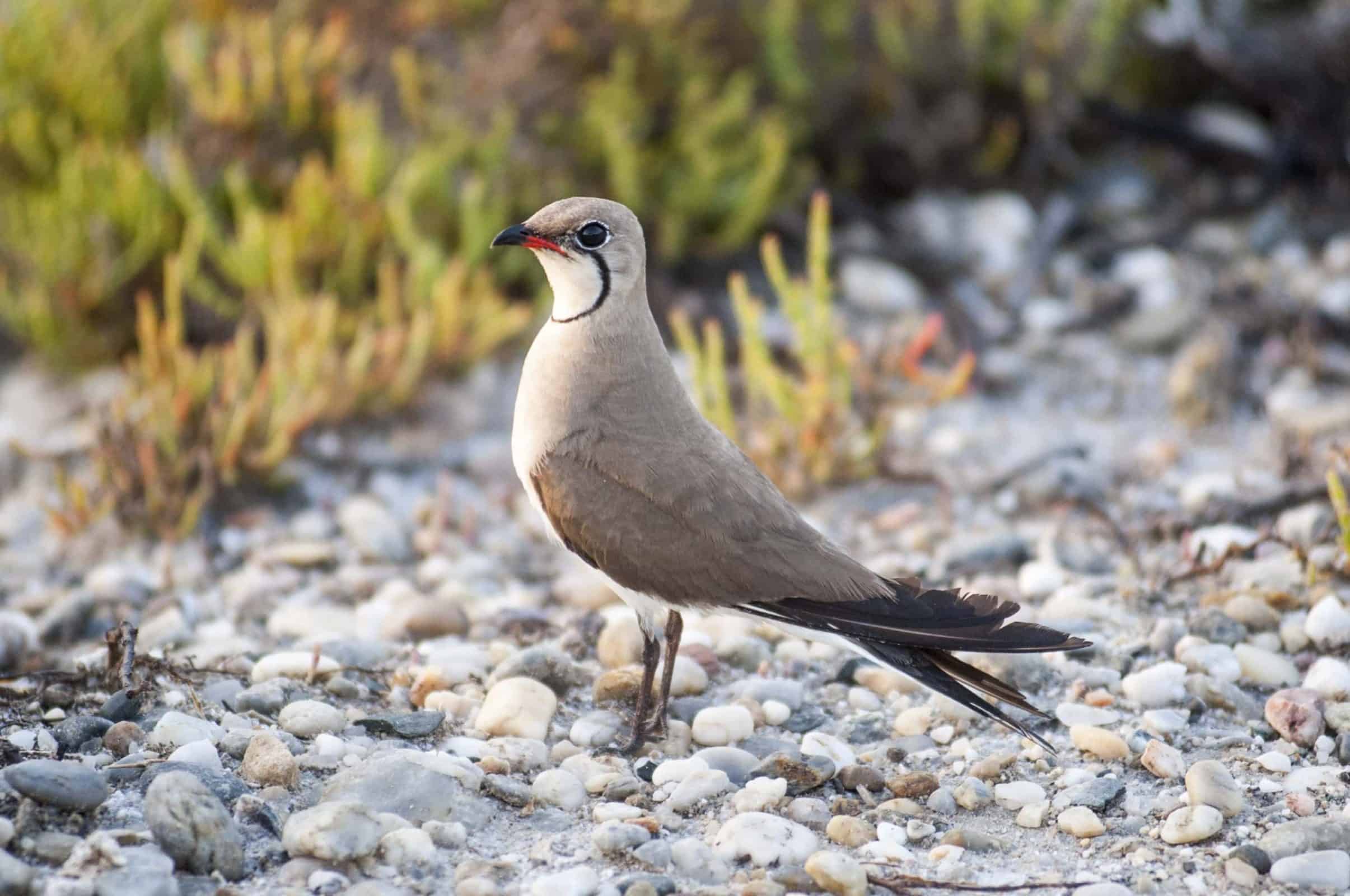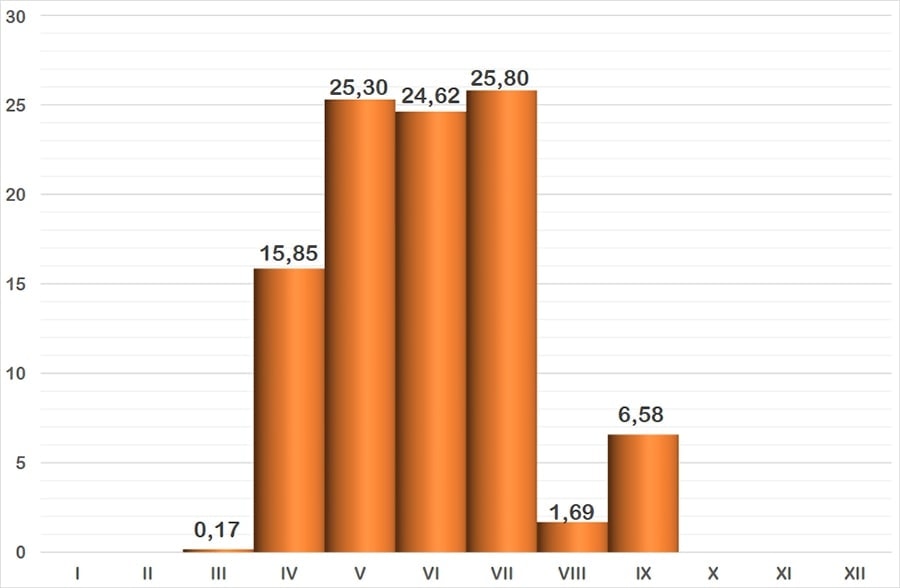In flight, its long, pointed wings and forked tail are reminiscent of a tern or a large swallow, but it differs from the former in that its legs are longer and its bill shorter. When perched, a brownish colouration can be observed on its back, wings, head and neck, on the breast it tends to lose the brown tends to turn yellowish. A delimited black eyeline outlines a lighter bib with a yellowish hue.

Species 1
Collared Pranticole
Scientific name
Family 2
Taxonomic Affinity Group 3
Phenology 4
It is an eminently summer bird, arriving in Roquetas de Mar in summer to reproduce and then leaving.

The graph represents the probability of seeing a species during the year, grouped into months. The vertical axis indicates the percentage value. Each of the bars expresses its value. The horizontal axis represents the months: I = January, II = February, III = March, IV = April, V = May, VI = June, VII = July, VIII = August, IX = September, X = October, XI = November and XII = December.
Observation recommendations
It is a gregarious bird, seen in flocks, when it is feeding in the air it is very noisy and flies quickly. Its summer presence is interesting and useful because its diet is based on insect larvae, making it an ally in the fight against annoying mosquitoes.
It is a bird which is considered vulnerable in the south-eastern part of the peninsula, the breeding colonies in the ‘Paraje Natural Punta Entinas-Sabinar’ are an exception in the breeding grounds, as they are unique to that geographical area. One of the biggest threats to the species are walkers, and even disrespectful birders, so the best practice to protect it is not to stay too close, to watch from afar, enjoy the feeding flights. If we detect “display” patterns designed to catch our attention and distract us, we should move away. If we find a nest with eggs, we must be extremely cautious since, due to the birds’ colonial nature, there may be others nearby. If what we find is a chick or a nestling, it may have left the breeding area due to its nidifugous or nest-fleeing behaviour, the best thing to do is to leave it where it is.
Observation areas where we can find it
Notes
[1] The names used are from the list of birds of Spain, drawn up by SEO/BirdLife and updated to 2019 (https://seo.org/listaavesdeespana/). The reference is: Rouco, M., Copete, J. L., De Juana, E., Gil-Velasco, M., Lorenzo, J. A., Martín, M., Milá, B., Molina, B. & Santos, D. M. 2019. Checklist of the birds of Spain. 2019 edition. SEO/BirdLife. Madrid.
[2] The taxonomic family to which it belongs is indicated.
[3] Traditionally, waterbirds have been grouped according to their taxonomy or “taxonomic affinity”, i.e., when some birds coincide in certain features that allow them to be classified scientifically, but without leaving the rigour of science, they are put together in these groups so that they can be easily recognised. These groups are the following: Greves (belonging to the Podicipedae family), Herons and Similar (includes the families: Ardeidae -Herons- Ciconiidae -Storks- and Threskiornithidae -Ibises and spoonbills-), Ducks (the whole Anatidae family), Coots and Similar (the family Rallidae corresponding to Rails, Gallinules and Coots), Cranes (also with only one family, the Gruidae), Waders , a heterogeneous group, the most diverse of this classification, includes the families Burhinidae (Stone-curlews), Haematopodidae (Oystercather), Recurvirostridade (Avocets and Stilts), Glareolidae (Pranticole), Charadriidadea (Plovers), Scolapacidae and finally Gulls and Similar (the recently unified family Laridae, i.e. Gulls and Terns).
[4] Phenology studies the relationship between the cycles of living beings and meteorological factors, and in our latitude these factors manifest themselves as variations throughout the year, thus relating the seasons to the birds’ cycles (breeding, migratory journeys, etc.) The graph shows the probability of seeing a bird depending on the month. It uses data from 48 bird censuses carried out between October 2016 and September 2018. The method used is that of a census route with sampling stations, with a total count on the sheet of water.
